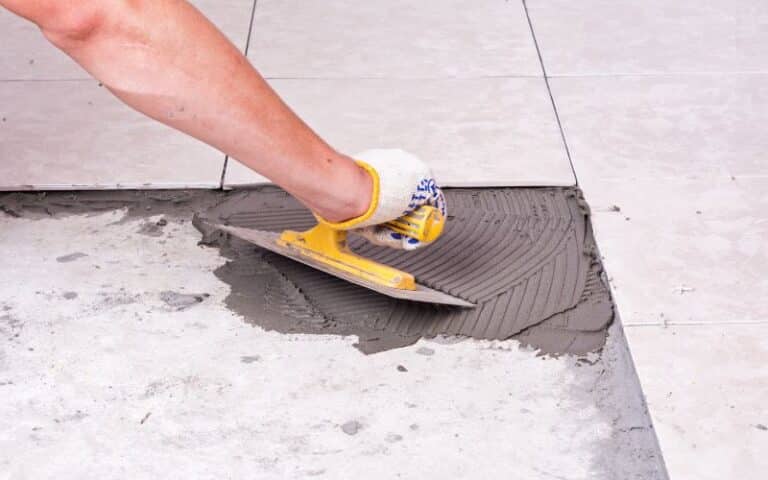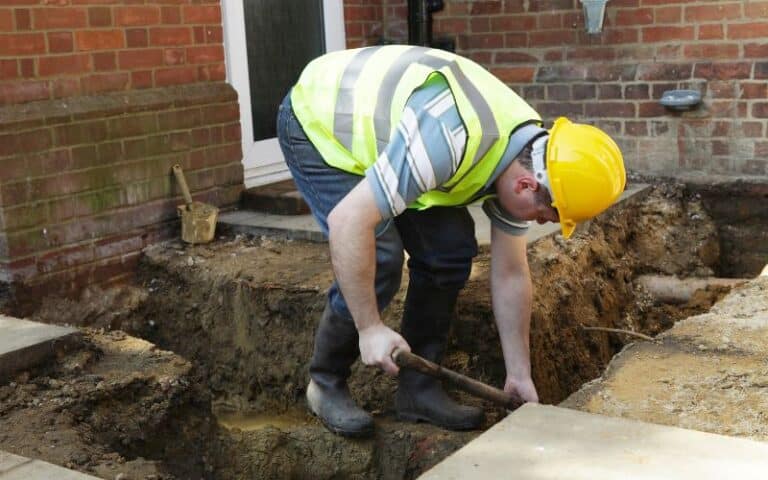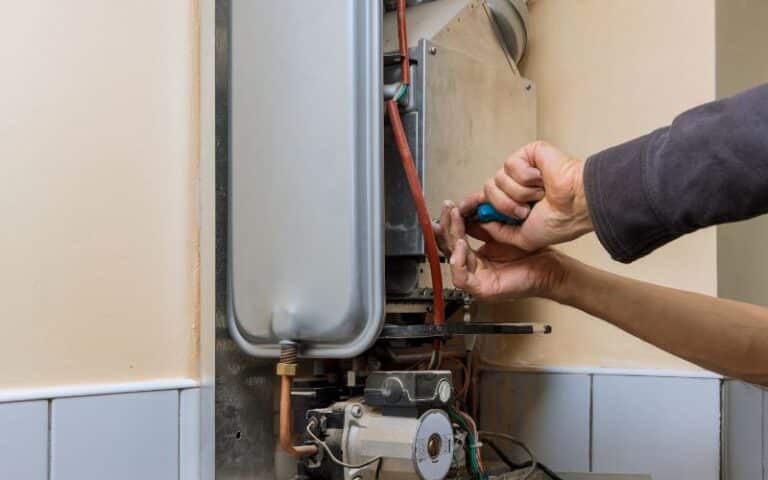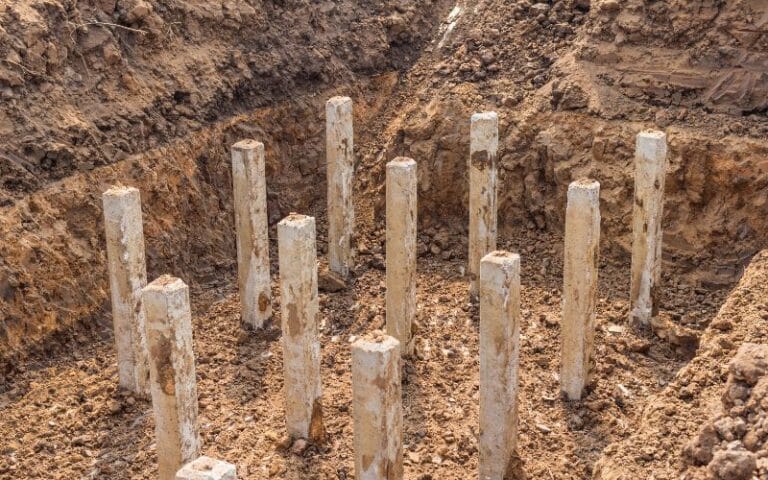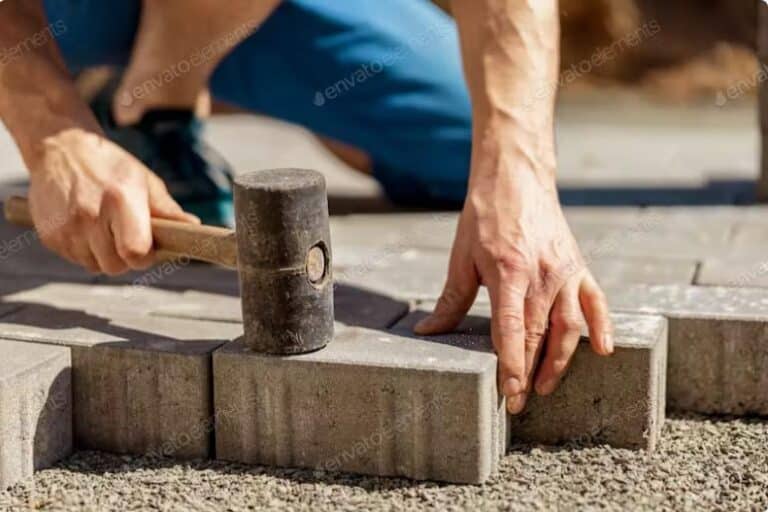When constructing a shed floor, choosing the right materials is essential to ensure durability, stability, and longevity.
One material that has gained attention for its cost-effectiveness and versatility is the Oriented Strand Board (OSB).
If you are planning to do the flooring of your shed, you may have some lingering questions concerning the safety of using OSB for your shed floors.
Therefore, this guide explains whether using OSB for your shed floor is okay.
Oriented Strand Board (OSB) is safe for flooring sheds and other construction projects. However, if your shed is open to moisture elements, you must treat it appropriately for moisture resistance. In addition, consider adding a layer of vapor barrier or insulation underneath for better protection and insulation.
In this article, I will explain if OSB is appropriate for flooring sheds. I’ll also explore its characteristics and advantages.
In addition, I’ll reveal the key factors to consider when incorporating OSB into your shed construction project and guide you through installing it.
Ready for a Flooring Quiz?
Can You Use OSB for Shed Floors?
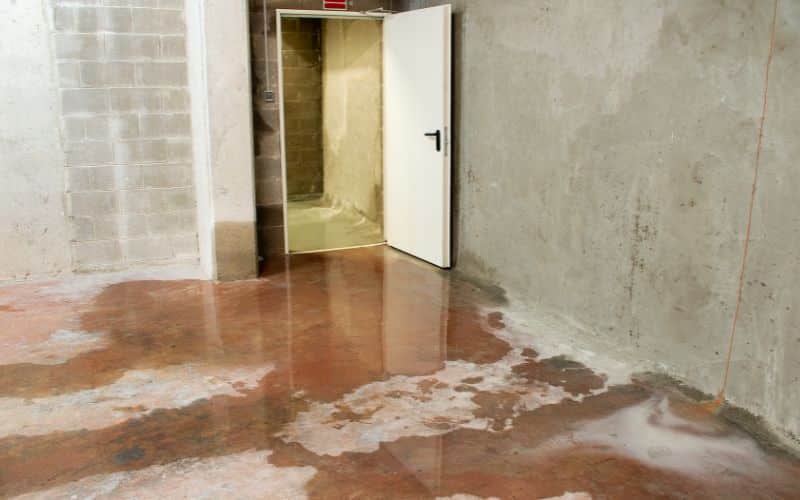
Yes, you can use OSB for shed floors. OSB (Oriented Strand Board) is a wood product engineered from layers of wood strands, compressed and bonded with resin.
The composition of OSB makes it sturdy, lightweight, and budget-friendly, which has led to its popularity in various construction applications.
Here are some of the advantages of using OSB for shed floors:
#1. Cost-effectiveness
OSB is generally more affordable than other flooring options like plywood or solid wood.
The affordability of OSB can be particularly appealing to you if you are looking to build your shed floors without breaking the bank.
#2. Strength and Durability
OSB’s layered structure contributes to its strength and resistance to warping or bending, which are important factors for a stable shed floor.
OSB’s construction method and structural strength provide excellent load-bearing capabilities, ensuring your shed’s floor can withstand the weight of equipment, tools, and storage items.
#3. Versatility
OSB comes in different thicknesses and grades, allowing you to choose the appropriate option based on the shed’s purpose and other specific requirements.
Thicker OSB can provide added strength for the floor, while thinner OSB may be suitable for the ceiling.
#4. Ease of Installation
You can easily cut OSB, making it convenient for a DIY shed project. Also, OSB’s consistent dimensions and smooth surface facilitate straightforward installation.
Moreover, OSB panels are typically larger than traditional wood planks, meaning you can cover larger areas with fewer pieces; this can hasten the construction process.
While using OSB for shed floors is cost-effective and has other benefits, you must consider some essential things before using it.
Here are the considerations for using OSB:
#5. Moisture Resistance
While OSB is moisture-resistant, it is not as waterproof as other materials. Hence, proper moisture management is crucial when using OSB.
It’s important to ensure proper ventilation, elevate the shed on a foundation, and incorporate moisture barriers when constructing the shed to enhance its longevity.
#6. Finish and Protection
A protective finish or sealant can mitigate potential moisture issues and improve the OSB’s durability.
It will help if you consider applying a waterproofing sealant to the OSB surface to enhance its water resistance and protect against the elements.
#7. Quality Grades
Depending on the intended use of the shed, you may need to select a thicker grade of OSB to accommodate heavier loads.
OSB comes in different quality grades, such as OSB1, OSB2, and OSB3.
OSB3 will be more effective for structural applications like floors due to its enhanced strength and moisture resistance.
Using OSB for shed floors can be a practical and economical choice, provided that you consider certain considerations.
With its affordability, strength, and versatility, OSB can be a reliable shed flooring option.
What Size of OSB Is Best for a Shed Floor?
OSB is available in various sizes, but the most common thicknesses for shed floors are 5/8 inch (16mm) and 3/4 inch (19mm).
Selecting the appropriate OSB size for your shed floors is a crucial decision you should not take lightly.
The size of the OSB you choose should align with the type of shed you’re building and its intended purpose.
For lightweight storage sheds or workshops, a 5/8-inch OSB might suffice.
However, if you plan to store heavy equipment or use the shed as a workspace, a sturdier 3/4-inch OSB would be more suitable to withstand the weight.
Furthermore, you must consider the span of the shed floor and the type of support it will receive.
If your shed is larger or will bear significant weight, such as riding lawnmowers or tools, opt for the thicker 3/4-inch OSB to prevent sagging and ensure the floor’s structural integrity.
A thicker OSB is generally more durable and provides better insulation against moisture and temperature fluctuations.
Investing in a 3/4-inch OSB can contribute to the longevity of your shed by offering greater resistance to wear and tear.
In addition, the climate in your area plays a significant role in determining the right OSB size.
If your shed is in a region with high humidity or frequent rainfall, opting for a thicker OSB can help mitigate moisture-related issues and prevent warping or decay.
Is OSB Better than Pressure-Treated Plywood for Shed Floors?
Among the various flooring options, two popular contenders are OSB (Oriented Strand Board) and pressure-treated plywood.
Each material has unique characteristics, benefits, and drawbacks, making it essential to understand their differences to make an informed decision for your shed flooring.
Here are the differences between OSB and pressure-treated plywood:
#1. Composition and Structure
OSB is an engineered wood strand bonded together using adhesive resins and formed into panels with uniform strength.
Pressure-treated plywood, on the other hand, is made from layers of wood veneer bonded with adhesives.
Manufacturers then treat the plywood with chemicals under high pressure to enhance its resistance to moisture, insects, and decay.
#2. Strength and Durability
OSB is famous for its high load-bearing capacity due to its uniform structure. It offers good dimensional stability and can handle heavy loads without significant sagging.
Pressure-treated plywood gains strength from the layers of wood veneer and the chemical treatment.
It also provides resistance against rot and insect damage, extending its lifespan.
#3. Moisture Resistance
While OSB has improved over the years in terms of moisture resistance, it is generally more susceptible to swelling and warping when exposed to water.
However, pressure-treated plywood, on the other hand, has superior moisture resistance, making it an excellent choice for areas prone to high humidity or occasional water exposure.
#4. Cost Considerations
OSB is often more cost-effective than pressure-treated plywood, making it a budget-friendly option for shed floors.
Due to the added treatment process, pressure-treated plywood tends to be more expensive than OSB.
#5. Ease of Installation
OSB is relatively easy to work with, and you can cut, nail, and screw without much trouble.
Pressure-treated plywood is also straightforward to work with, and its uniform layers provide stability when attaching fasteners.
The choice in comparing OSB and pressure-treated plywood for shed floors depends on your priorities. If cost-efficiency and strength are key factors, OSB might be your go-to option.
On the other hand, if moisture resistance, durability, and protection against decay are essential, pressure-treated plywood could be the better choice.
Check the table below to discover more differences between OSB and pressure-treated plywood.
| Oriented Strand Board | Pressure-Treated Plywood |
|---|---|
| OSB is prone to swelling and warping. | Pressure-treated plywood is more resistant to moisture. |
| It’s generally strong and rigid. | Its strength varies based on the plywood type. |
| It’s typically cheaper. | It’s generally more expensive. |
| OSB has moderate durability. | Increased resistance to decay. |
| OSB has a high environmental reputation. | Pressure-treated plywood contains chemicals. |
| OSB is most appropriate for sheathing, flooring, and roofing. | Pressure-treated plywood is more appropriate for outdoor projects and decking. |
The table above shows that both materials have their merits, and the right choice depends on your specific needs, budget, and preferences.
Whichever option you select, proper installation and maintenance are crucial for ensuring a long-lasting and functional shed floor.
How To Install OSB Floors in a Shed?
OSB is cost-effective, sturdy, and relatively easy to install.
Follow the instructions below to install OSB floors in your shed, ensuring a solid foundation.
#1. Preparation
The first thing to do when installing OSB floors is to measure the dimensions of your shed’s interior to determine the amount of OSB sheets you’ll need.
Then, clear the shed’s floor of any debris or obstacles and ensure the shed’s base is level and free from moisture to prevent future issues.
#2. Cutting OSB Sheets
Place the first OSB sheet along one edge of the shed, leaving a small gap around the perimeter for expansion.
Measure and mark the sheet for any areas that need trimming to fit the shed’s dimensions. Use a circular saw or jigsaw to cut along the marked lines carefully.
#3. Installation
Begin the installation by laying down the first cut OSB sheet along the edge, leaving a small gap against the walls.
Use a carpenter’s square to ensure the sheet aligns properly. Secure the sheet by screwing it down every 6-8 inches along the joists beneath.
Continue this process with the remaining sheets and stagger the seams for more stability. Use nails to secure the sheets’ corners, ensuring they fasten properly.
Once all the sheets are in place, check for gaps or uneven spots and sand down rough edges.
Ensure you apply a coat of sealant or finish to the OSB for added protection against moisture.
In addition, consider adding a layer of plywood or a moisture barrier if your shed is prone to dampness.
Can You Use OSB for the Shed Floor and Ceiling?
Yes, you can use OSB for both shed floors and ceilings.
Using OSB for shed floors and ceilings offers a balanced combination of affordability, strength, and versatility.
However, you must consider factors such as moisture management, quality grades, finishing, and insulation before installing.
Considering these factors, you can ensure that your shed benefits from OSB’s advantages while mitigating its potential drawbacks.
Whether you’re a DIY enthusiast or a seasoned builder, know that OSB can be a smart choice for creating a functional and visually appealing shed.

